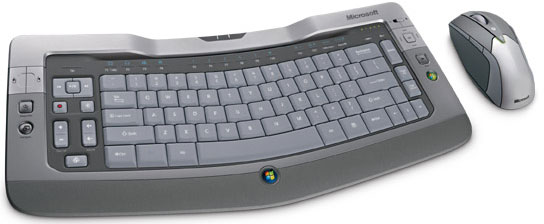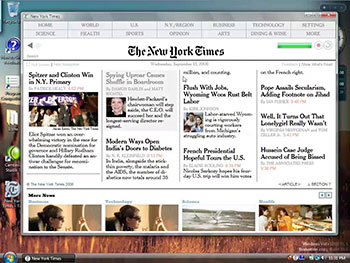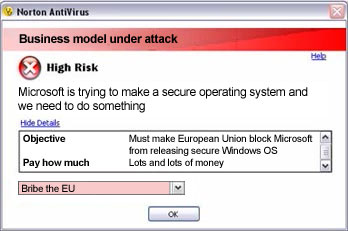
First thing’s first. What’s up with the name? I thought cyborg names were a distant past of the age of magnetic drives and flashing LED lights. Intel could have continued their 80×86 naming scheme, which would have been up to about 801186 by now, but they went down the Pentium path because they didn’t want their CPUs to sound like a model of vacuum cleaners. Product names should definitely come without the list of keywords associated with the product, and even less so, a 4-digit number. I also smell a lawsuit coming up.
Second thing. The design rocks. I’m a big fan of laptop-styled keyboard because the keys are not extruded as much, so you don’t have to push your fingers all the way. I have weak fingers OK? Also, they’re super quiet, so you can touch type without waking up the neighbours. The thin form-factor is also very stylish, but it looks as easy to break as a wafer.
The price? Who knows. Knowing this is aimed towards Media Center users and technology enthusiasts, it’ll cost probably more than it should. But this would work well as a “Vista package” for the enthusiasts, a set of launch products including Vista Ultimate, Office 2007, keyboard and mouse and probably some nifty merchandising. I don’t know, just throwing an idea out there.
Update: The retail price is US$249.95. That’s going to cost the same as a gallon of petrol by the time it ships. Review sample anyone? 😛
 A bird flew over my house today and pooped out a USB-drive with the
A bird flew over my house today and pooped out a USB-drive with the 
 It is human (and animal) nature to be curious. We always want to know about what we don’t know. And when you try to stop a process in the sole of every human being, often it doesn’t work and could even lead to negative effects. So why do companies still do it? I take a look at our natural companions, Apple and Microsoft and compare how each deals with the rumourmill.
It is human (and animal) nature to be curious. We always want to know about what we don’t know. And when you try to stop a process in the sole of every human being, often it doesn’t work and could even lead to negative effects. So why do companies still do it? I take a look at our natural companions, Apple and Microsoft and compare how each deals with the rumourmill.
